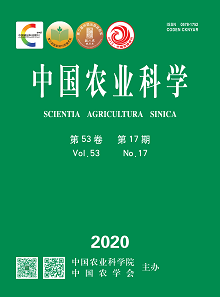【Objective】With the global climate change, meteorological disasters occur frequently during the maize growth season. In order to explore characteristics of root response to rainy and low light stress, this study was carried out to investigate root morphology, physiological traits and yield of maize under waterlogging and low light combined stress at flowering stage.【Method】Taking two different maize varieties (Zhengdan958 and Yuyu22) as research objects, the experiment, including four treatments with contrast (CK), waterlogging (W), low light (S), and waterlogging and low light (WS) was conducted to compare dynamic changes of root dry weight, root length, root surface area, root volume, nodal root layer and to analyze the morphological, anatomical and physiological characteristics and yield under different stress.【Result】The root dry weight, root length, root surface area and root volume of maize were significantly decreased under combined stress, and these indicators were the largest reductions under waterlogging and low light stress, the second reductions under waterlogging stress and the smallest reductions under low light stress. Compared to CK, root dry weight were decreased by 15.21%, 5.08%, 21.07% , and root length were decreased by 14.86%, 5.52%, 18.14% in average under waterlogging stress, low light stress and combined stress, respectively. Root superficial area and root volume were decreased by 9.83%, 4.62%, 12.72% and 12.62%, 6.61%, 16.23% under three different stress (W, S, and WS). Compared to W and S stress, root dry weight, root length, root surface area and root volume were decreased by 6.64%, 3.84%, 3.21%, 4.12% and 16.55%, 13.10%, 8.41%, 10.32% under WS stress, and it was significantly different between WS and S. But there was no obviously different between WS and W. Root aerenchyma numbers, root aerenchyma areas, root porosity and crown root layers were increased significantly under waterlogging stress as well as waterlogging and low light combined stress. Compared with the contrast, root aerenchyma numbers were increased significantly by 5.29 and 10.03 times with W and WS treatment in average, respectively. Then aerenchyma areas and root porosities were increased by 5.76, 13.27 times and 8.01, 10.00 times under W and WS treatment, respectively. Crown root layers had more 1 to 2 layers under W and WS than that under CK, however, there was not different obviously between S and CK. Root physiological traits and yield of maize were decreasing significantly under waterlogging and low light stress. Especially there was the largest decreasing under combined stress. Compared with CK, root activities, total root absorbing area, root active absorbing area and ratio of active root absorption of maize were decreased significantly by 52.82%, 28.48%, 36.72% and 20.00% in average under combined stress, respectively. The change order of treatments was WS









